Myths And Facts About Hair Transplant Treatment 2020
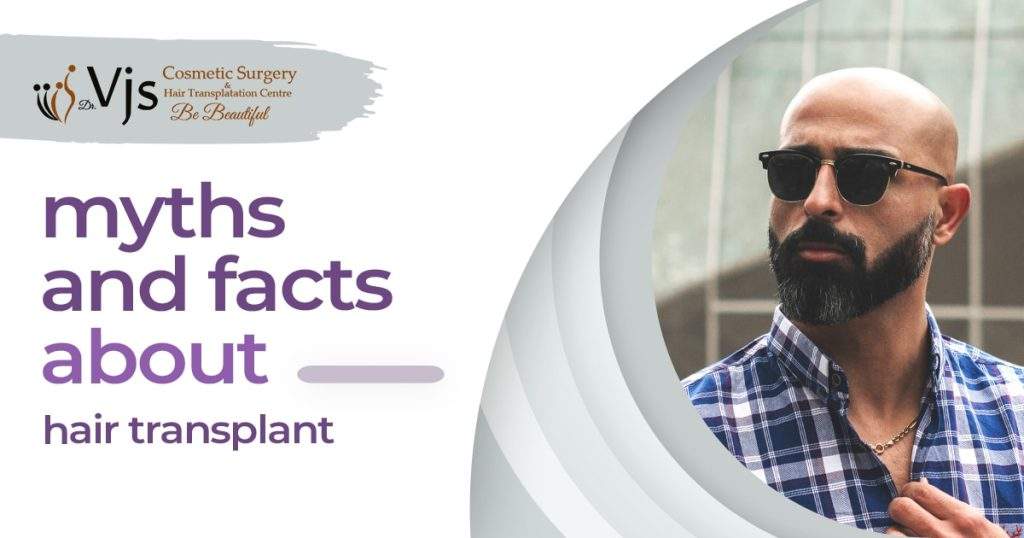
![]()
Given below are some of the common myths and facts about hair transplant treatment for dealing with hair loss problem: Myth: Hair is transplanted from one place to another Fact: During the treatment, the hair follicles are extracted from one place to another. The hair follicles hold single, double, or multiple hair strands that need to be transplanted to the problematic part of the scalp. Myth: Doctor can use someone else hair for the surgery Fact: No other person’s hair can be sued with the surgery. The surgeon is going to use the person’s hair follicles and shift them to one part of the head where you have a bald part of the scalp or there is thin hair. Myth: Procedure is painful Fact: The surgery is performed under local or general anesthesia. This is the reason, the person can undergo the treatment without any problem. During the surgery, the person might feel like needle pricks which are quite normal. The patient can go home the same day and there is no need to stay in the hospital. Myth: Hair transplant surgery cannot give natural results Fact: If you undergo the treatment under the supervision of an experienced and good surgeon, then you don’t have to worry about the looks. You can rest assured that your hair looks natural. The doctor is going to make sure the grafts are placed with utmost precision with the right angle of the graft. Moreover, you can wash the hair, flaunt, and cut them the way you like. Myth: New-look will be seen overnight Fact: once you undergo the surgery, you need to wait for a long time. The initial hair growth can be seen within 3 months. After that, the desired hair growth will be seen within 6 to 8 months. This means you need to be patient when you undergo the surgery. Myth: Hair grows for some time only Fact: Many people believe that newly transplanted grafts will grow for some time and later they fall off. The hair will grow for a lifetime which means you are going to see the desired hair grafts. The hair will continue to grow for a lifetime for 8 to 12 months. This way you are going to see the desired results and your issue of hair loss will be solved. Myth: Hair restoration results are temporary Fact: The best part of the surgery is that you will have permanent results. This means you need to undergo the treatment just once and the hair will continue to grow for a lifetime. During the surgery, the surgeon will take hair follicles from one part of the scalp and then transplant them to the problematic area. Moreover, you can maintain the hair in the same way as you would have done with your natural hair. Myth: procedure can affect the brain Fact: This is the biggest myth that revolves around the surgery. Undergoing treatment is not going to affect the brain. For more information, consult the doctor by booking your appointment today only!
Do you want to get knowledge about hair loss research and treatment in 2020?
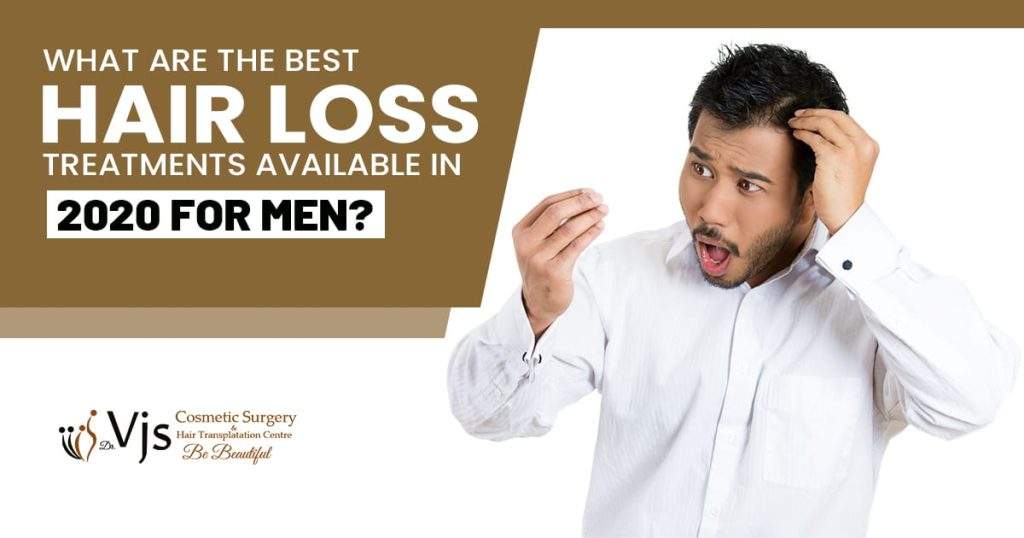
![]()
Every year it will seem that there are headlines that suggest an end to hair loss or a recent breakthrough that might potentially contribute to hair loss. Hair fall may come from genetic manipulation, other medications, and even any type of scalp trauma. Both men and women try hair-recovery methods to counter hair loss and provide them with all the hairlines they want. Let’s discuss the newest scientific advances, and some of those might not be so recent, marketed one, and for so as a means of avoiding hair loss. These days, several people undergo hair transplant because this is the best surgical treatment to treat hair fall or hair thinning. In this article, you will also learn about certain other therapies for hair loss in 2020. Study and therapies for hair loss in 2020 Since the 1990s, the concept of cloning of hair follicles or hair follicles cloning has been around but is still being discussed as a potential way of preventing hair loss. This is better represented as hair multiplication for hair follicles to be cloned. Different hair follicles in the medical laboratory or in vivo AKA within a body may be developed from a single scalp. The science behind hair cloning was identified as follicles on a patient’s skin are connected to established stem cells. In other terms, the freshly developed hair in a laboratory will develop directly in the scalp like all-natural hair, with the skin. This approach of animal models has been through. However, there are still additional steps to be performed in human models until the long-term results and general efficacy of this new hair restocking process can be used by doctors and patients. Hair cloning is not applicable to the general public in real-life circumstances and would only (at least) be essential for patients to use to treat their balding scalp for a while until such a form of hair loss is accepted. Hair Loss and Balding Biotechnology Treatment Patients should be mindful that hair regeneration or hair transplantation on the scalp will have a safe and complete treatment. The transplanted hair is real, so in the future, it would not be bald. Unfortunately, balding is not a choice in many areas of the scalp while a person begins to grow old. As we stated Hair transplantation is the best treatment for hair loss these days. It is the best treatment that always offers you natural results similar to your natural hair. There is also work into how hair transplants can be successfully done and whether patients can produce even more outcomes. While attempts have been made to tackle and fix balding issues for patients, more trials and research on non-hair transplants are needed.
Everything you need to know about Failed Hair Transplant treatment
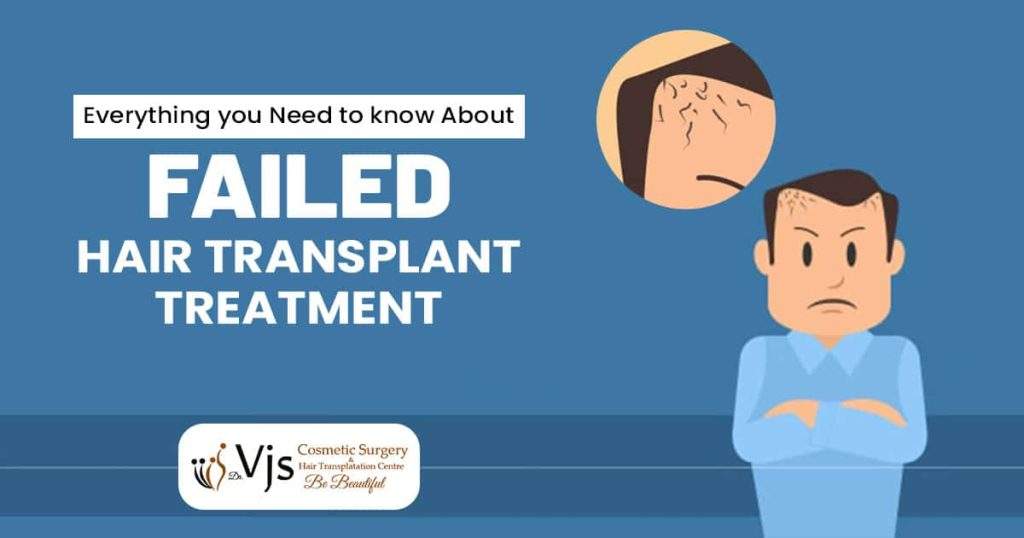
![]()
Overview With the innovative and latest technique to deal with hair loss like hair transplant, the patient can get the best results. Unfortunately, some of the hair transplant fails when the surgery is done with little experience and less technical expertise. Failed Hair Transplant Different reasons are included for failed hair transplant and some of them are: Improper surgical method This leads to thinning in the donor area or the presence of a scar. Getting the treatment from an inexperienced surgeon will make the treatment performed improperly. Technical failure Technical failure is caused when the surgery is as an out-dated method or the surgeon uses the unsuitable instruments during treatment. Not a suitable candidate Certain patients are not suitable candidates for the surgery and they need to be advised to undergo different treatments to deal with hair loss. What are the situations where hair transplant is needed? It is important to correct the outcome of poor quality hair transplant treatment. Some of the causes of poor outcomes are: Defective hairline Undergoing the treatment with unprofessional surgery will aggravate the alopecia syndrome and this will give an unnatural look and people can easily notice the person has undergone the surgery. In that case, the hair follicles need to be placed for reconstructing the hairline. Wide scar or stretched scar following FUT FUT is a strip procedure that includes surgical removal of a strip of scalp and this often leads to the permanent linear scar on the back of the scalp. Over time, the patients can face the widening of the scar and this is the reason long-lasting and effective solutions. What are the rescue options for failed hair transplant? At VJ’s, our doctor will make a careful and detailed assessment to choose the best hair restoration technique for getting the desired results. Our doctor can fix the bad results of the treatment with the following ways: Correcting bad hair transplant To correct the issues of previous surgery, the doctor may decide to take the grafts and transplant them with other methods to take healthy grafts for implantation. The surgeon aims to give you the best possible results which look natural. Plug removal If camouflaging the plug-looking grafts does not work then a more intensive method is needed. The doctor will remove the poorly placed grafts, re-distribute them, and reduce the size to create the natural-looking results. Fixing scars Patients who have a strip scar due to the surgery, have the best option to hide the scar by growing hair and this covers it appropriately. However, this solution is temporary. For a permanent solution, the doctor will use the FUE technique and transplant the hair follicles to minimize or hide the scars.
Is the excess hair fall problem is the reason for Seborrheic Dermatitis
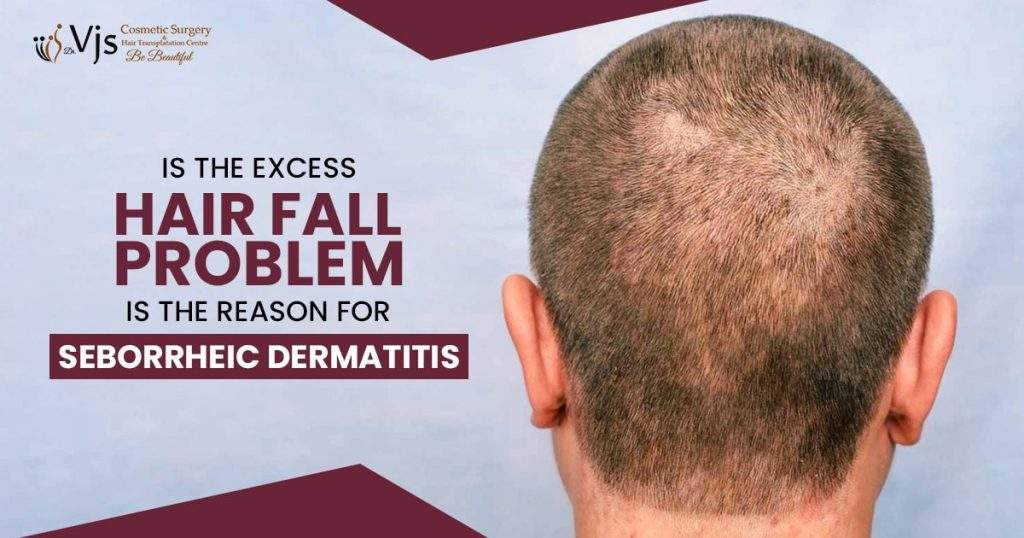
![]()
Do you find yourself constantly brushing flakes of your shoulders? You might have tried anti-dandruff shampoo to deal with this embarrassing problem. If you are experiencing a flaky scalp, then it might be possible your hair is getting thin. A dry or flaky scalp is caused by dandruff. The scalp skin is replacing itself constantly when the old cells are pushed out and then the flakes are created which you see on the clothing. Everyday skin cells are shed and most of the time these are from the scalp. In some conditions, the cell turnover will pass rapidly which results in larger flakes and this gives dandruff appearance. What is Seborrheic Dermatitis? Seborrheic Dermatitis is a common skin condition that affects the different body parts like creases around the nose, ears, chest, and groin. The problem results in flaky and red skin which is considered as dandruff but it is a more severe condition and it needs to be treated. Seborrheic dermatitis is NOT an infection and not contagious. It is not caused by allergies but it is uncomfortable and embarrassing. If you believe that you are suffering from this and it gets to the point it is extremely serious then you need to seek medical help from the doctor. The doctor will help you get detailed information on what treatment plan is best for you. Seborrheic Dermatitis and Hair Loss Seborrheic dermatitis should be treated by the doctor as you get older if you are worried about your appearance. This problem can result in hair loss in different ways. Hair can get attached to the oily flakes or skin layers that get irritated and pulled out while scratching the scalp. This means the scalp will itch more and more as the itchiness increases and the scratches can bull the hair. The hair follicles can get clogged due to the flakiness, scratching, and greasiness of the scalp which affect hair growth. It is essential to treat the underlying cause so that the hair follicles grow the way it needs to. The problem itself does not result in hair loss but the inflammation around the hair follicles will not let the hair grow the way it needs to. The problem can be reversed with medical treatment. Once the problem is treated properly the hair will continue to grow healthy and strong. Seborrheic Dermatitis Treatment Options For this condition, medicated shampoos can reduce yeast and decrease scalp inflammation. Over-the-counter shampoos like ‘Head and Shoulders,’ ‘T-Sal’, ‘Nizoral’ and ‘Selsun Blue’ are the ideal choice in this condition. Make sure to scrub your hair gently by massaging the suds into the scalp and let it sit there for 10 minutes before you rinse it. You need to give time to the scalp to penetrate itself. If these are not enough, then you may need topical medications or prescription-strength shampoo for the scalp.
Are you planning to get a hair transplant and want to know about its safety?
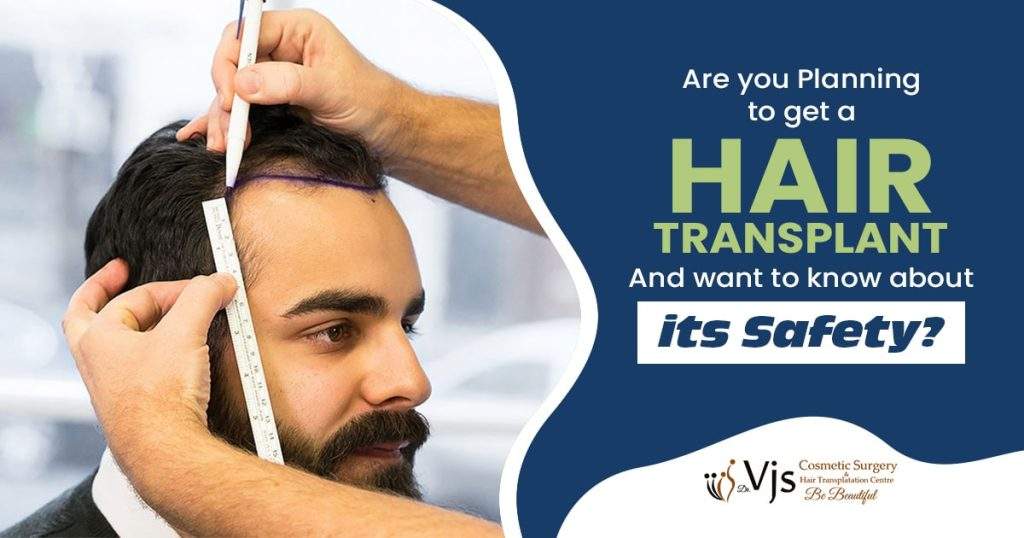
![]()
Rising numbers of people losing hair at a much earlier age render baldness a crazy issue. Too much pollution, altered, and unhealthy lifestyle and hair care items’ additives both lead to a rising rate of baldness. Although it may not be widely recognized, many men become very aware of baldness and are looking for ways to deal with it. There are many hair restoration drugs, but it seems to be a hair transplant that is the most effective procedure. The implantation of hair follicles into the scalp from a donor location (another portion of the scalp or body). The follicles become implanted and begin to develop at the new site, which tends to cure baldness. Prior to transplantation One of the safety aspects during getting hair transplant surgery is to consider in advance is that you select the correct medical practitioner. Not only does the transplant itself fail, but you can also have many other complications including infection and scarring if you’re not in the right hands. Beyond baldness, there are other things which may render the matter more difficult. Ensure the doctor has the requisite hair transplantation expertise and skills. During the procedure of hair transplantation Although a posh as well as a completely new clinic is not needed, a clean, hygienically sound clinic is definitely necessary. Post-surgical infection is a serious concern, so it is best to make sure that the condition is not conducive to hair transplantation. After the hair transplantation procedure Treatment during transplant is of the highest significance. This is the responsibility of both the surgeon and the patient. The surgeon will have specific instructions to be observed closely by the patient. Post-transplantation problems may render the condition worse, from prolonged healing to scarring. Hair transplantation is just like every other procedure and possible risks can occur before, during, or after the hair transplant procedure, including: 1. Sculpture or scars at the incision position 2. Pus discharge and illness 3. Pain in the head 4. Bleeding 5. Hair loss proceeded The graft is not approved at the new location on the scalp and thus hair can not develop, one of the most severe complications. This also has to be constantly worked. Overall, a very healthy operation with a good success rate of 10 percent to 80 percent is called hair transplantation. Hair growth is based on several variables so it’s certainly healthy to seek transplant if you’re concerned about hair loss. That’s why your surgeon tells you to follow all the post-operative instructions properly. This will help you to recover faster from hair transplantation surgical procedures.
Which food items are considered beneficial to prevent excessive hair loss?

![]()
Important nutrients for hair When your body does not get the right amount of nutrients and proteins the hair structure is affected. It is important to include all the essential nutrients which improve the hair state and make them healthy. If the problem is severe then you need to undergo the treatment of hair transplant. Following the treatment also you need to make sure to follow a strict diet so that your hair gets all the nutrients it needs and it will be healthy and strong. Proteins Protein is the main component of hair. If protein intake is low, hair growth will slow down and the hair shaft will become thin and fragile. Pigmentation also becomes less and less pronounced. Include food that contains protein like eggs, fish, meat, legumes, and low-fat cheese. Fatty acids Fat creates a defensive shield for body cells, and they help your skin and hair to keep them hydrated and protect them from external irritants. The most important are omega-3 and omega-6 fatty acids. You can get the necessary amount from them by including the food items like fish, nuts, and flaxseed oil. Vitamins Vitamins leave a positive effect on hair health. Here the vitamins of the group of E, A, B, and D should be favored particularly. Vitamin D is the easiest to maintain as it is produced naturally by UV lights. So, you should neglect the sunlight because it is important for hair health. Trace elements Iron, zinc, and selenium are essential minerals for hair loss. Selenium is important for the creation of new hair and zinc helps in strengthening the hair follicles. The best sources of zinc are meat, mushrooms, oatmeal, and shellfish. You should eat more nuts, whole grains, and spinach to increase its intake in the body. For iron, you need to eat oysters, green leafy vegetables, iron, dried fruits, and whole grains. These are a great choice for improving hair health. What causes hair loss and what you should eat to treat them? Hair loss is a symptom of different diseases, but it mostly occurs in those who are suffering from anemia and thyroid dysfunction. People with thyroid problems need to increase the intake of vitamin A and iodine. Vitamin A is found in spinach and carrots. You should eat more spinach, parsley broccoli, and sea vegetables to increase the iodine level in the body. If the person is suffering from anemia, then they need to increase the intake of poppy seeds, sunflower seeds, pumpkin seeds, peaches, figs, green leafy vegetables, nettle, basil, dill, spinach, sesame, and apricots. All these food options are a great choice in restoring hair health and making them shiny. You should adopt a healthier lifestyle and take proper care of your hair.
What are the causes of grey and premature grey hair in both men and women?
![]()
Hair loss is a common hair condition that can only be treated with surgical treatment like hair transplant. However, these days people complain about grey hair or premature grey hair. Hair changing towards grey is clearly a chronic concern and is correlated with getting older. Especially when it happens prematurely, even at 30 years of age often. Well, not everyone experiences grey hair, but the majority of people experience grey hair in old age. What are the causes of grey hair? On each individual hair follicle, melanocyte cells can be found. They produce the natural hair coloration called melanin. In blondes less and in black hair more. The hair’s natural shade depends on the proportion of pigment adapters. Yellow pigments, blond hair-: brown, even dark hair. You may appreciate the beauty of hair because melanin is developed in the hair follicle. Sadly, melanocytes mature over time and are intricately associated with the greying cycle. Melanocyte coloration is no longer as extreme, their output is irregular, and hence only single grey hair emerges at the beginning. They are free of melanin and take on the keratin fiber color. This time is defined genetically. Oxidative stress during hair aging It turns out that oxidative stress is important for your hair. Hair turns gray because hydrogen peroxide in hair follicles is more and more produced over time. Hydrogen peroxide accumulation in hair follicles interferes with melanin synthesis. It inhibits directly, directly. A decreased activity of the enzyme breaking down, catalase is causing the accumulation of hydrogen peroxide. In addition, the levels of MSR A and MSR B hair-capacitating enzymes in hair follicles decrease. The development of tyrosinase, the enzyme responsible for the creation of hair dye melanin in follicles are affected with high levels of hydrogen peroxide, together with low levels of MSR A and MSR B. What makes premature grey hair? The first grey hair typically occurs about 35-40 physiologically. However, the issue of premature greying between the ages of 25 and 35 is impacting more and more people. Most of the causes for premature grey hair are listed below as they can be quite complex. Genes: The most prominent source of gray hair issues is hereditary disorders. There is a greater risk that you would be impacted if your parents or relatives have grey hair at an early age. Stress: The higher the stress or tension, the better the risk of health issues. You may exhibit signs of premature greying if you are anxious or vulnerable to stress. Lifestyle unhealthy-: Having an unhealthy diet all the time leads you to premature grey hair. Vitamin and mineral deficiency: The deficiency significantly affects hair and hair loss: B vitamins (mainly B12), biotin, folly acid, pantothenic acid, and aminobenzoic acid, E vitamins. With age, the amount of the body is reduced by a lot of minerals associated with their poorer absorption and frequent occurrence of chronic diseases. In addition: titanium, zinc, copper. Hyperactivity, lack of sleep. Thyroid disease Diabetes
What are the different tests performed for diagnosing women’s hair loss?
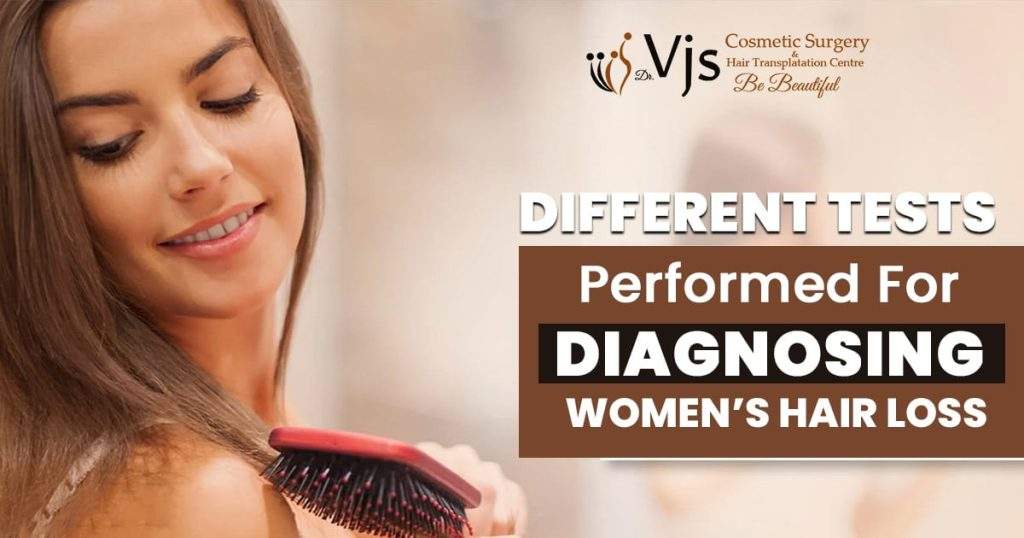
![]()
Hair loss is a common issue that comes with age. In some cases, the problem is temporary and sometimes it is hereditary which is known as male pattern baldness. The problem is common in both men and women. Women face the issue of hair loss due to different conditions and circumstances. Ideally, the best way to deal with hair problems once and for all is by consulting the doctor for hair transplant. Hair transplantation is the best issue to deal with hair loss and cover all the bald spots permanently. The treatment gives natural results that are not possible with any other treatment plan. Understanding the treatment for women hair loss It is important to do the diagnostic test to pinpoint the issue of hair loss. The truth is that many patients these tests are within the normal range but these tests at the very least will eliminate the possibility of getting certain problems which leads to hair loss. Keep in mind, the proper diagnosis of female hair loss begins with the elimination process. What are the different tests for hair loss in women? Given below are the different tests which the women need to undergo to diagnose the reason for hair loss: Check the hormone levels which include follicular stimulating hormone, DHEA, androstenedione, testosterone, and luteinizing hormone. Thyroid levels (T3, T4, and TSH) Complete Blood count (CBC) Serum ferritin, serum iron, and total iron-binding capacity. Scalp biopsy With scalp biopsy, a small part of the scalp is taken which is then examined under the microscope to determine the reason for hair loss. VDRL (a screening test for syphilis) Hair pull A Doctor will lightly pull a small amount of hair to know if there is excessive hair loss. If more than 3 hair comes the patient is suffering from excessive hair loss. Densitometry The densitometer is a magnification device that checks the miniaturization of the hair shaft. How to test the degree of women’s hair loss? Well, there are 2 common tests to check the degree of female hair loss. The hair loss specialists use the density scales which includes: Ludwig Scale Savin Scale Both of them are identical scales to check the degree of hair loss but the only difference is between them is that the Savin scale checks the overall thinning. In the savin scale, you can get to learn the range of hair loss from no hair to severe hair loss. Consult the doctor Ideally, hair transplantation is the perfect choice for the person dealing with hair loss. During the surgery, hair follicles are taken from the back of the scalp and then transplanted to where hair growth is extremely less. Its results are natural and the hair regrowth is permanent.
What are the various Psychological Effects of getting Hair Transplant?
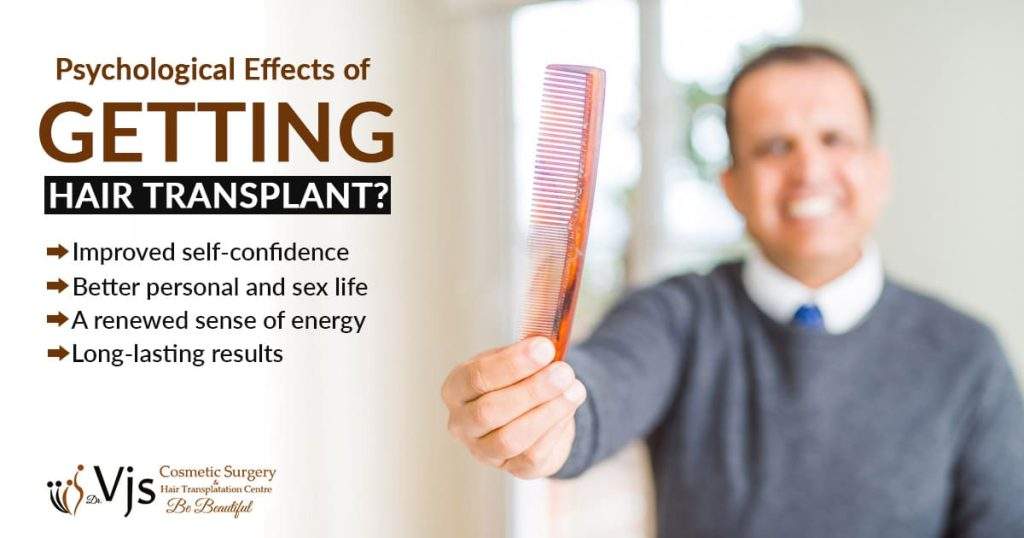
![]()
Hair transplant is the only surgical treatment for hair loss, which can give you the best results according to your condition. Hair loss is not only your problem, but there are several people suffering from hair fall these days. This happens due to various other health conditions, your poor eating regimen, and so on. No matter, how many treatments you got to get rid of hair fall conditions, but you were unable to get a permanent solution. This condition leads you to low confidence and energy as well. The only solution is to get rid of hair fall and get desired results is hair transplantation. Let’s have a look at the psychological effects of hair transplant surgery in this blog. Self-esteem, social anxiety, and depression are among the most common consequences of hair loss, even non-psychologists can easily realize the negative impact that diluted skin and baldness can have on their psyche. Hair transplantation is an effective and natural technique to treat hair loss. According to our specialists, hair transplantation will have a significant effect on human development and the therapeutic effects of hair transplantation. Hair transplantation effectively will contribute to a significant improvement in self-confidence. Improved self-confidence An effective hair transplant in India can really improve the self-confidence of an individual, and this restored faith has beneficial results both in personal and work life. A total hair head preserves a fresh appearance and increases hopes for the future and joy. Better personal and sex life A full head of hair will help people look more like others and help them feel more confident about themselves. Scientists have shown that improved trust and wellbeing will improve the confidence of an individual, specifically influencing people’s moods and their interpersonal relationships. A thick head of hair may enhance vitality and maintain anxiety. A renewed sense of energy In a trustworthy center, after getting hair transplantation people have found themselves adopting a more healthy way of living, preferring nutritious diets and holding to proper workout. Some of these individuals are raising their morale, attitude, and enhancing their clothing way. People start feeling better about themselves as people look younger. This experience is identical to the infusion of endorphins, neurochemicals that induce happiness and pain-relieving. The patient feels more comfortable and Natural treatment The hair color is identical to the original because the treatment produces totally natural results. Hair development normally begins 2-3 months later. There are no misconceptions linked with other approaches of hair transplantation, so this allows patients to feel more comfortable. Long-lasting results While there are fast-fixing solutions for the remediation of hair loss or thinning like hair extensions, pigs, and toupees, the therapeutic results on the mind are not similar. On the other side, hair transplants are more capable of fixing hair loss issues.
What are the different factors that influence the cost of Hair Transplant surgery?
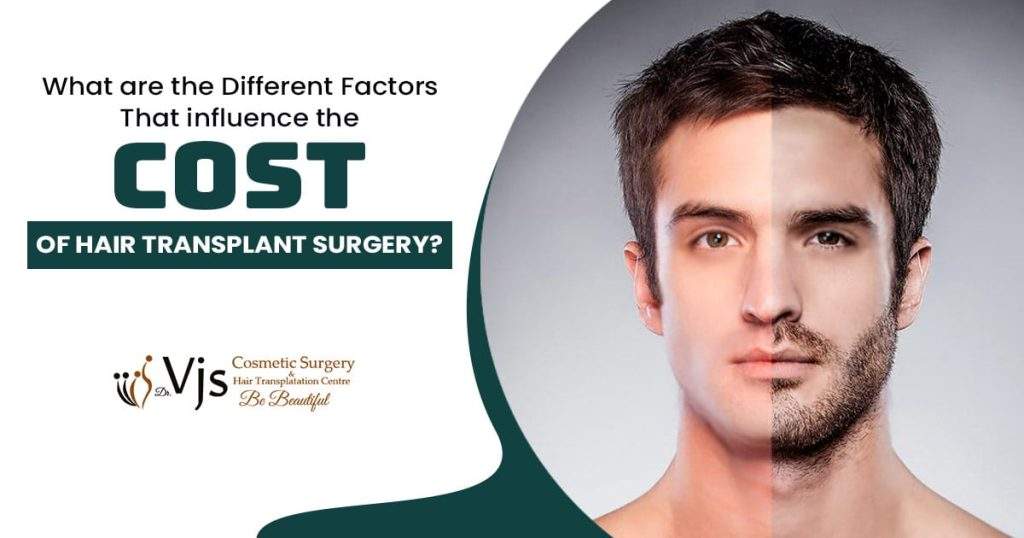
![]()
A hair transplant is a surgical procedure designed for those with excessive hair fall. If you are one of them and suffering from this condition, you may need to undergo hair transplant surgery. Only this surgical treatment can give you the best results as per your desires. Some people said that it has a higher cost as compared to other hair loss treatments. Well, the cost of hair transplantation depends on several factors. The different techniques for hair transplants include FUT, FUE, Hybrid, and robotic hair transplantation, which offer the best hair transplantation results. Also, Hair transplantation has become a standard cosmetic procedure over time. Due to these facts, this treatment cost is a little high, but you don’t take tension, because several factors affect the cost of hair transplantation. These are explained below-: Number of hair grafts It is the main factor to determine the cost of hair transplantation. A total number of follicles according to grade and region of baldness that is impaired. The hair growth or density at the donor area. The hair density in the donor region is particularly critical when deciding the hair transplantation procedure to fulfill your particular preconditions. Equipments and tools used in the surgery The cost of hair transplantation also depends on the usage of tools and equipments that are used in a surgical procedure. The process, the degree of adaptation, and the advantages of the transplant equipment. The surgeon’s skills, expertise, and knowledge If you are choosing a skilled surgeon, then it may cost you a little higher as compared to others. As the cost of treatment also depends on the experience, knowledge, and skills of the hair transplant surgeon. Location of the center The clinic’s venue, for example, in metro cities and other mega towns where housing rates are large and the cost of surgery higher than in many smaller towns and cities. Too Hard competition Competition in places with relatively few surgeons where hair transplantation can be more costly. Number of sessions This is the most important cost factor to be considered, how many treatment sessions or time so you require hair transplantation. Post-operative care The cost also depends on the post-operative care plant as well. Recovery Skin sensitivity is improved following a hair transplant procedure. This may be needed to wear a bandage on the scalp for a few days. A drug for pain control, an anti-inflammatory medication to avoid swelling, and an antibiotic to forestall infection following a hair transplant might be recommended. The recovery time depends on the procedure employed with an FUE hair transplant that gives a shorter recovery cycle. Overall, within a matter of days to a week, the bulk of people start work. Sutures made, if usable, will usually be withdrawn or dissolved within 10 days.
